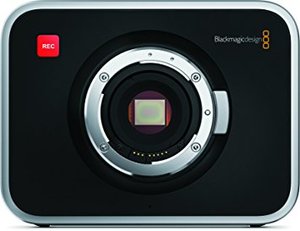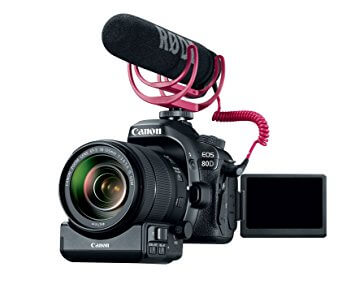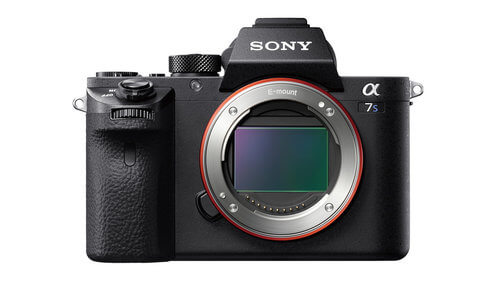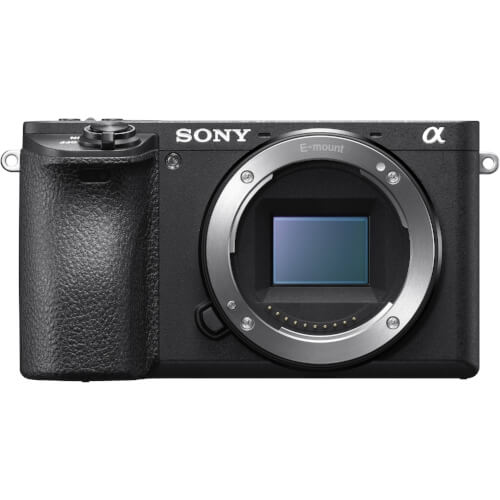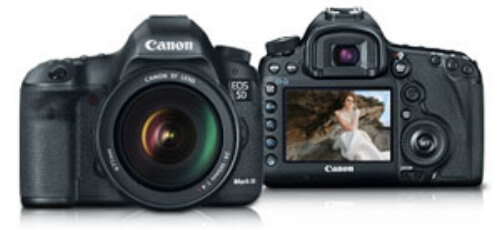Zeiss Lens vs Leica Lens: Which Brand is Better?
Zeiss or Lecia lens? Which premium lens should you choose?
It seems like a simple enough question but it is the furthest thing from it with many among photography circles torn as to which variety proves superior of the pair.
The difference is often marginal and today we’ll put both types of lenses under the spotlight to find out which one edges this race as we take a look at the Zeiss lens vs Leica lens showdown.
Build quality
Zeiss models have a robust body and architecture that fares better than a number of rangefinder lenses made in the past century, however, they just come up short to the build quality of the Leica that is more compact and durable.
The chrome and mounts detach too easily hence this lens tends to loosen up extremely quickly which poses longevity issues.
Furthermore, the black alteration of Leica models seems more elegant than the obsidian shade of Zeiss varieties that come off as not very good.
Aperture ring stops
Zeiss lenses often incorporate 1/3 stops compared to Leica’s 1/2 stops and the former is actually preferable of good lenses as they offer more clicks within a single range.
This means that Zeiss lenses tend to allow more light to the sensor making the detail on dark areas of the images stand out. Also, 1/3 stops allow a finer transition of exposure compensation in comparison.
All in all, this difference is almost unnoticeable but still notable nonetheless.
Lubricant differences
Leica also emergences victorious on the lens lubricant front as their lubricants tend to also be better than those of Zeiss’ lenses.
As a result, the focus ring of Zeiss tends to stiffen a bit during the colder days of the year as the lubricant easily freezes; problems unheard of with Leica lenses where the lubricant is of top-notch quality and will last you a good couple of years without any difficulties.
Bokeh
Zeiss lenses tend to have a busy bokeh which means the quality of its out-of-focus surrounding is usually not up to par and this is normally down to the fact that these lenses are often hypercorrected.
Leica lenses, on the other hand, do a commendable job of bringing out the detail in those areas not focused on by the camera. Consequently, the latter is the go-to variety in telephoto and macro lenses and basically any other case that involves a shallow depth of field.
Design flaw
The grip ring of most Zeiss lenses is quite shallow milled and is almost in line with the focus ring which makes detaching the lens from the mount a cumbersome task.
Conversely, Leica products tend to encompass a slightly larger diameter for the grip ring in comparison which makes removing the lens a lot easier and hassle-free.
Image quality
Image quality naturally differs from one model to another within either brand however Leica tends to fare better than their Zeiss counterpart in terms of color and contrast.
The shades of Leica lenses usually have more vivid colors while the contrast is a bit richer than what you would get with a Zeiss lens of almost similar attributes.
On the flipside though, Zeiss lenses tend to produce a bit more sharpness in images than Leica varieties.
Coding
While Leica lenses are mostly codable, Zeiss models on the other hand are usually not and can’t be as the manufacturers solely made them for digital purposes.
In the rare cases where you can, the coding is usually a tough affair to say the least and most of the time you’ll have to make do with manual resets.
All in all, this aspect proves a matter of convenience rather than necessity.
Service and availability of parts
Zeiss services are often centralized and costly and while Leica service is also centralized as well, it is not as expensive.
Moreover, they have a good track record of maintaining repair parts and, for example, if you are in search of a 1959 M3 shutter speed dial, then you are sure to find a replacement with Leica.
So if your lens becomes faulty even a decade later for one reason or another, Leica are certain to have a replacement for you.
LEICA
German manufacturer Leica rarely misses the mark with their lenses which forms the subject of today’s discussion i.e. the two best Leica lens varieties you should definitely try out:

Leica’s f/2 Summicron lenses are no strangers to excellence and this variety exemplifies all the essential attributes that make this lineage the true hallmark of perfection. Here is a look at what the APO-Summicron has to offer:
i) Excellent bokeh
Very few, if any, posses the bokeh prowess exhibited by this model that offers as good as it gets for these types of lenses. The out-of-focus blur is commendably good while the object at the center of the masterpiece sticks out in fine detail amidst a background that nonchalantly fades into oblivion without conspicuously sticking out. This lens is therefore especially suited for scenarios that produce a shallow fields of depth.
ii) Build quality
A glance at the body straight away reveals how much time and effort the company put into turning this model into a delicious treat both to the touch and visually. This 50 AP is smaller in size than the 50 Summilux and the gorgeous exterior encompasses a nifty hood (twist and lock), a focus tub and a nicely dampened focus feel. The finish and fit are impeccable while the lens barrel is nicely firm and devoid of wobbles.
iii) Optical performance
The sharpness around corners and edges definitely stands out as really good and the wide field of depth is also just as nice. Contrast, pop and color fidelity are also unlike anything else seen with models of this variety. Moreover, the richness in detail is evident in elaborate, concise and extensive shots while overall image quality is not plagued by chromatic abrasions or distortions of any kind. In a word, the optical performance of this lens can be simply described as divine.
iv) Lens handling
Lens handling also sets the 50mm APO on another league of its own with the 90-degree focus throw ensuring almost instantaneous focusing. The aperture ring is easy to locate by touch as it is conveniently seated at the lens’ anterior while the hood is invitingly shallow making the overall lens, hood layout extremely easy to navigate. Further, there is no need for absolute focus precision as the F2 wide depth pretty much gives you all the focusing accuracy you need.
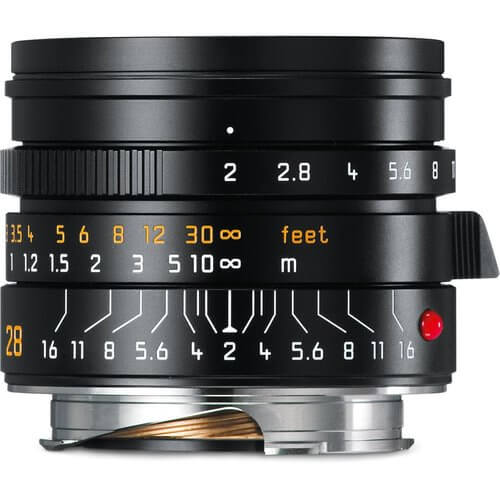
leica 28mm-min.jpg
LEICA SUMMICRON-M 28mm f/2 ASPH
Check Pricing and Availability
This is another Summicron worthy of the best Leica lens tag and its attributes encompass:
i) Ergonomics and architecture
Well built is a term that can be used to sufficiently describe the 28 Cron with the body ensuring gorgeous alignment synergy between the lens and the metal hood. Its large size is particularly welcome as it reduces the problem of flashing your finger before the lens while the detachable hood and flexible focus and aperture ring oozes quality. The well-textured fall off is also good as it ensures the viewer’s attention doesn’t stray away but is instead firmly focused on the image at hand.
ii) Sharpness and bokeh
The 28 Cron has admirable corner sharpness and decreasing the aperture ring during stepping down improves the center sharpness greatly; an aspect that architects will particularly find very useful. In fact, at f4, the image quality is a combination of excellent and proficient color like those offered by more high-end devices of its kind. For a 28 mm lens, it also has a pretty decent bokeh uncommon among lenses of its small stature. You can effectively blur out the surrounding and make the subject of your image stand out nicely.
iii) Rendering
The range of image creation is also a noteworthy feature as you can create various images with different rending counts. An impeccable in and out focus transition ensures seamless arrangement of images making it perfect for depicting those romantic captures that wedding photographers are gunning for.
iv) Focusing
The 28 mm Cron might lack autofocus but it more than makes up for this with its wide lens that provides great flexibility. Using the distance scale’s 10-meter reading, you can get agreeably sharp images even from well over 63m and as near as 5.45 m away. Reducing scale to half that marking ensures sharpness between 3.5 and 8.6m while this quality is even more prominent upon stopping down.
These two lenses make a strong case for the best Leica lenses ever made and they are arguably the standout pair among the production line.
ZEISS
Zeiss has been in the lens business for countless decades and over that period they have produced a couple of notable hits and forgettable misses. This article’s focus will be on the former category as we take a look at two Zeiss varieties worthy of the best Zeiss lens title:
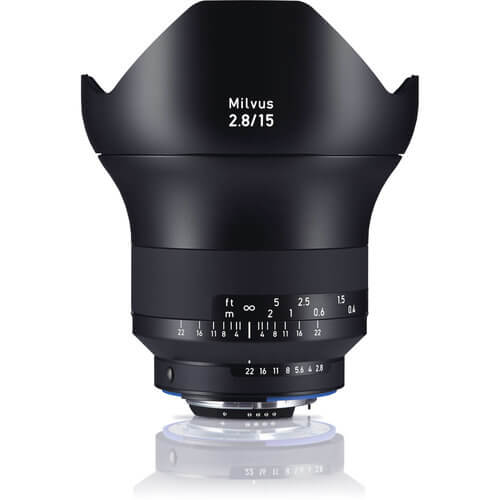
Check Pricing and Availability
The Milvus Lens family keeps on welcoming new members every now and again and this 15 mm alternation proves a noteworthy addition courtesy of its prowess in various aspects of photography.
Without further ado, here are a couple of reasons why the Zeiss Milvus 15 mm is so popular:
i) Focal length
The diagonal view angle has a commendable 110-degree allowance coupled by an ultra-wide architecture encompassing a 15 mm focal length.
These features combine to great effect making it perfect for environmental, real estate, nightscape and landscape portraits like shooting upwards into trees.
Moreover, this focal length alleviates the issues of stitching associated with multi-image panorama capture.
ii) Max aperture
Few lenses within this focal range have a wider aperture than the f/2.8 of this full body frame model making it a master at capturing low-light distant action. The bigger aperture opening also makes object-isolating blur very good.
iii) Focusing
With the Zeiss Milvus variations, you are handed the steering wheel of focusing as these lenses are of the manual focus kind. Consequently, regardless of the focus distance, precision and accuracy are assured courtesy of a seamless focusing ring with a rotation spanning a width of 120 degrees.
Also, the diameters of the lens barrel and focus ring are sufficiently different to ensure easy detachment of the lens should the need arise.
iv) Image quality
The Zeiss Milvus bloodline is synonymous with excellent image quality and it is simply a copy-and-paste case for this model which also boasts a stellar performance in this regard. In a word, the sharpness, contrast and color balance is stellar.
v) Auxiliary features and general build quality
This Zeiss lens is easy on the eye and the aesthetically pleasing contours are particularly nice and comfortable to the hands making it perfect for working long hours. Moreover, the lens hood is conveniently removable whilst still retaining a solid architecture complimented gorgeously by a vibrant blue moisture and dust proof gasket.
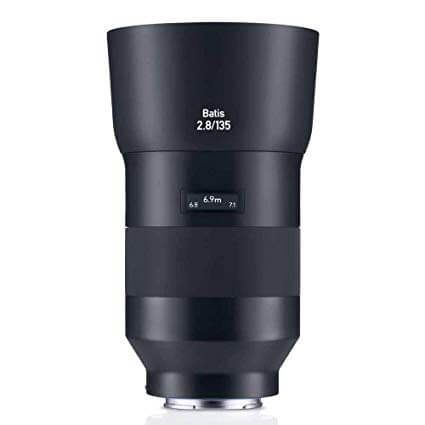
Check Pricing and Availability
The Apo Sonnart Batis also frequently features in best Zeiss lens discussions and here are a couple of reasons just why that is so:
i) Handling and build
The body of the Batis is conjured from a composite metal alloy that is durable and nice to the touch.
The focus ring is rubberized and the build quality all in all can be effectively described as top-notch and there is a nice balance between robustness and weight.
With regards to handling, the wire controlled manual focus provides nice, slow and accurate transitions whilst also allowing for swift ring movements in case there is need for massive changes.
ii) Image stabilization
This model boasts a splendid optical stabilizer that provides very good service at extremely low shutter speeds which is quite uncommon for lenses of this focal length.
The detail is crisp and sharp even for 1/5th second shots while the whole process of engaging the optical lens is commendably unobtrusive.
There aren’t any markers when it comes off or on and there is virtually no noise produced.
iii) Image quality
The lens bears an f/2.8 maximum armature that deviates from the problem of heavy vignette that plagues most Zeiss lenses. From a practical point of view, this model’s performance is also flawless as well.
The resolution comes off nicely while the texture and detail are effectively elaborate down to the nitty gritty. There are no chromatic or distortion aberrations while color renditions and skin tones appear really well.
iv) Autofocus performance
Once enabled in the menu interface, manipulation of the image in the viewfinder is a breeze and has added features such as zebras and focus peaking. What’s more, the IBIS (in body image stabilization) has an in-built five-axis stabilization that works well even with the older lens varieties.
These two Zeiss lenses are among the elite in their category and if you are unsure of which Zeiss lens would cut it for you, then you are sure to find what you’re looking for within this pair of worthy contenders for the number one spot.
Final verdict
While comparing these lenses from a general point of view is quite unsatisfactory as there are different models within either brand with varying qualities, Leica nonetheless prove the better choice.
Zeiss lenses are also not bad as they offer good value for money but overall they come second-best in this Zeiss lens vs Leica lens battle.
2Bridges Productions Copyright © 2017. Address: 25 Monroe St, New York, NY 10002. Phone: 516-659-7074 – All Rights Reserved.
We are a participant in the Amazon Services LLC Associates Program, an affiliate advertising program designed to provide a means for us to earn fees by linking to Amazon.com and affiliated sites.

